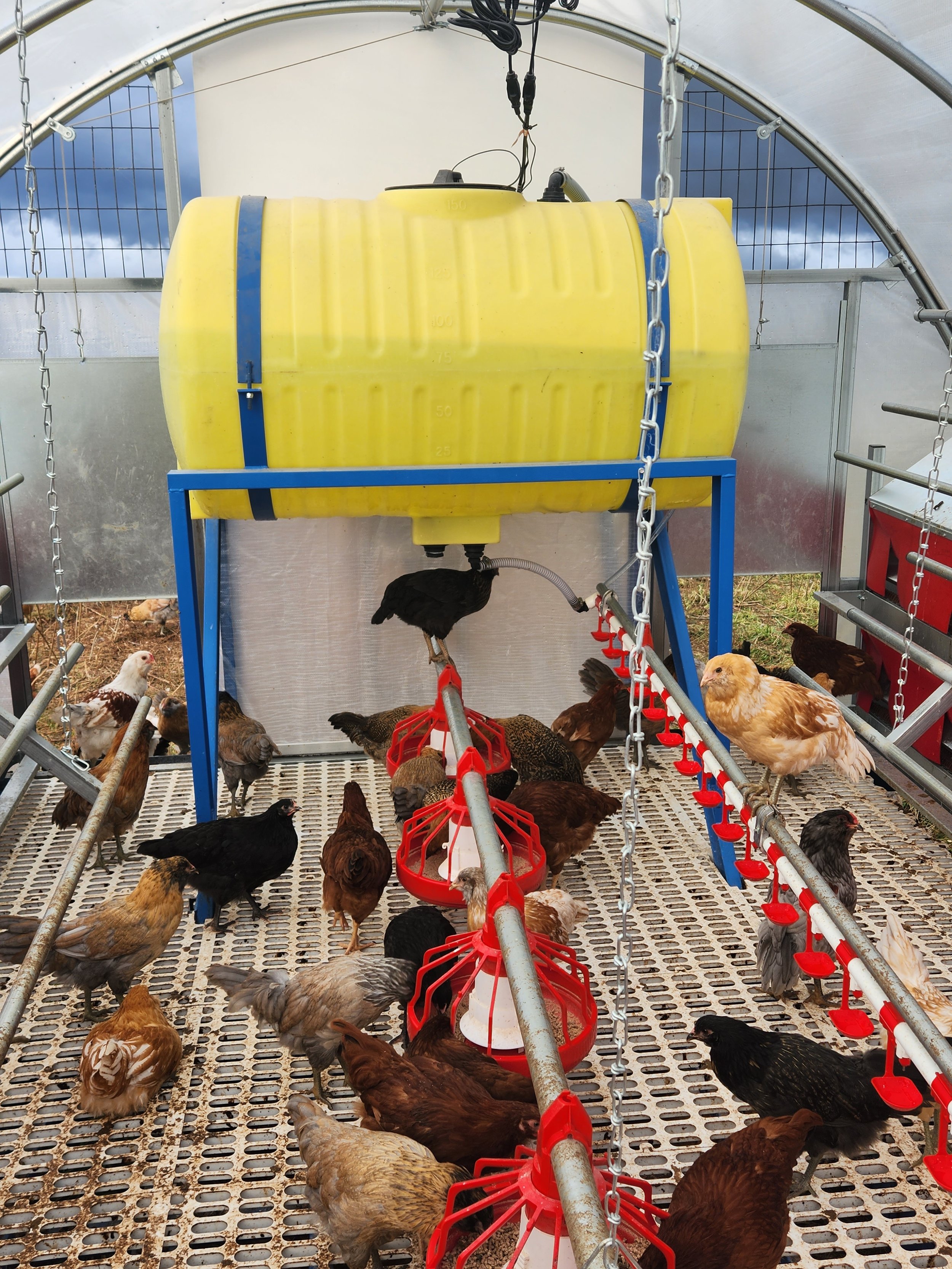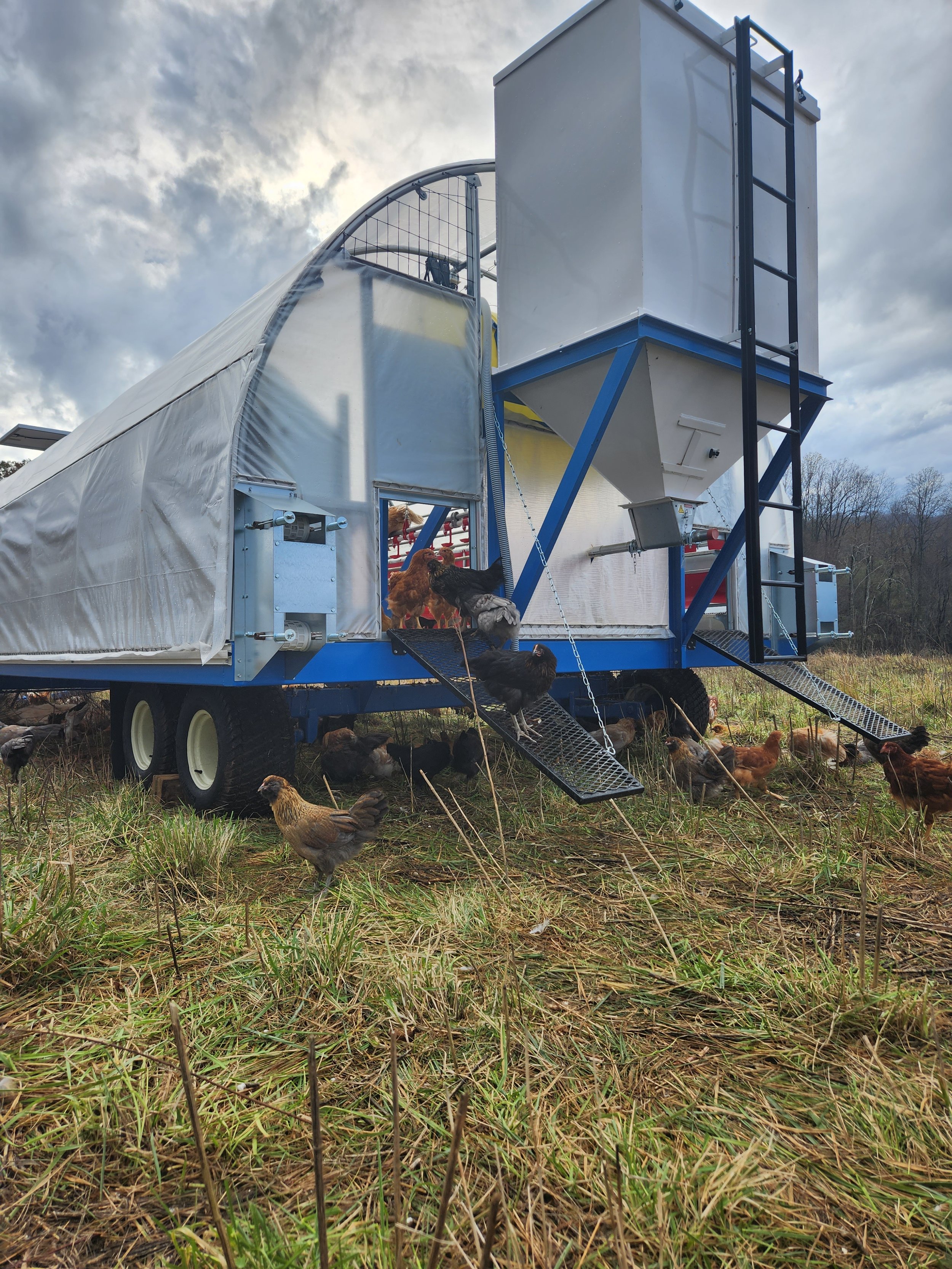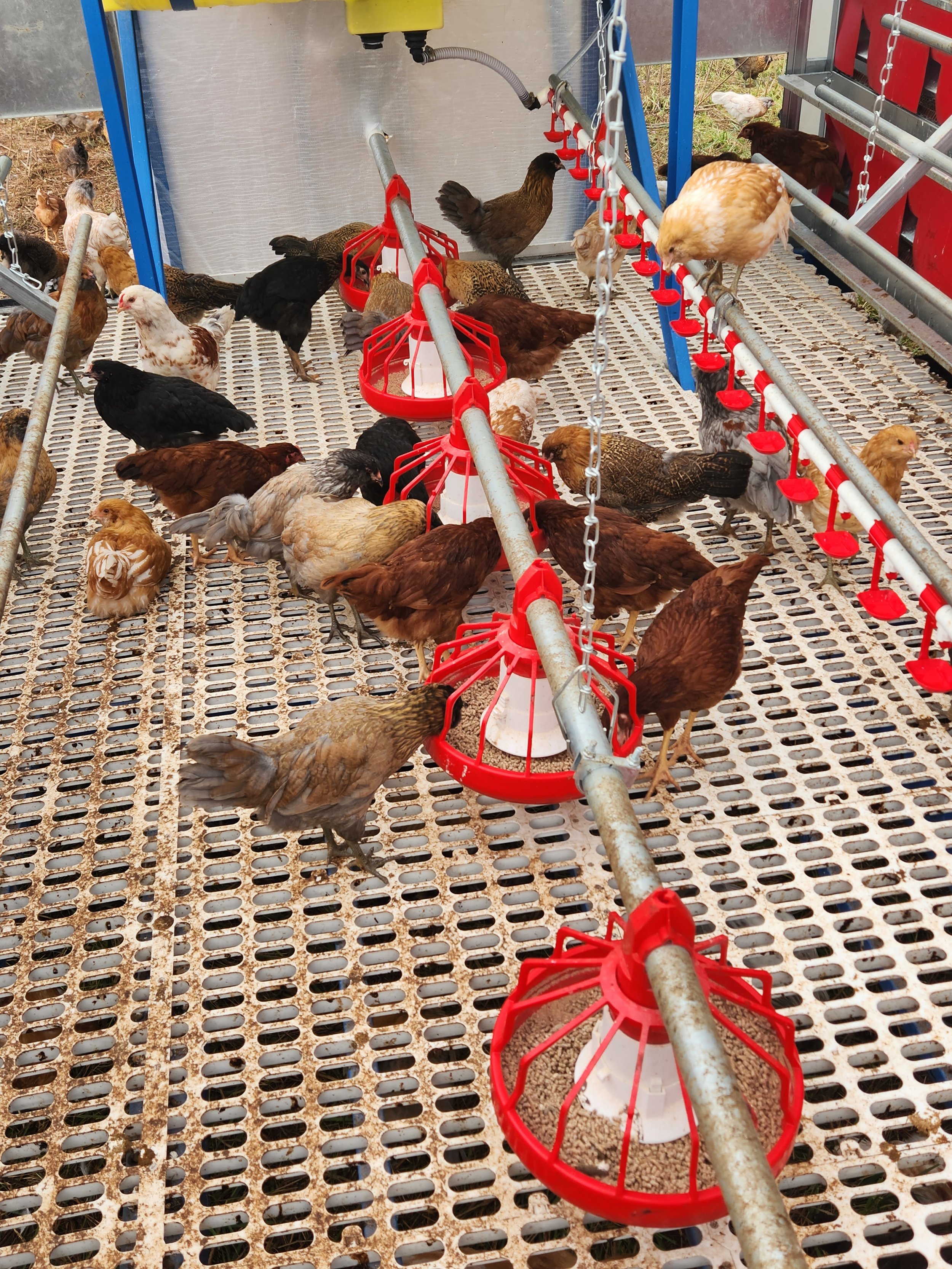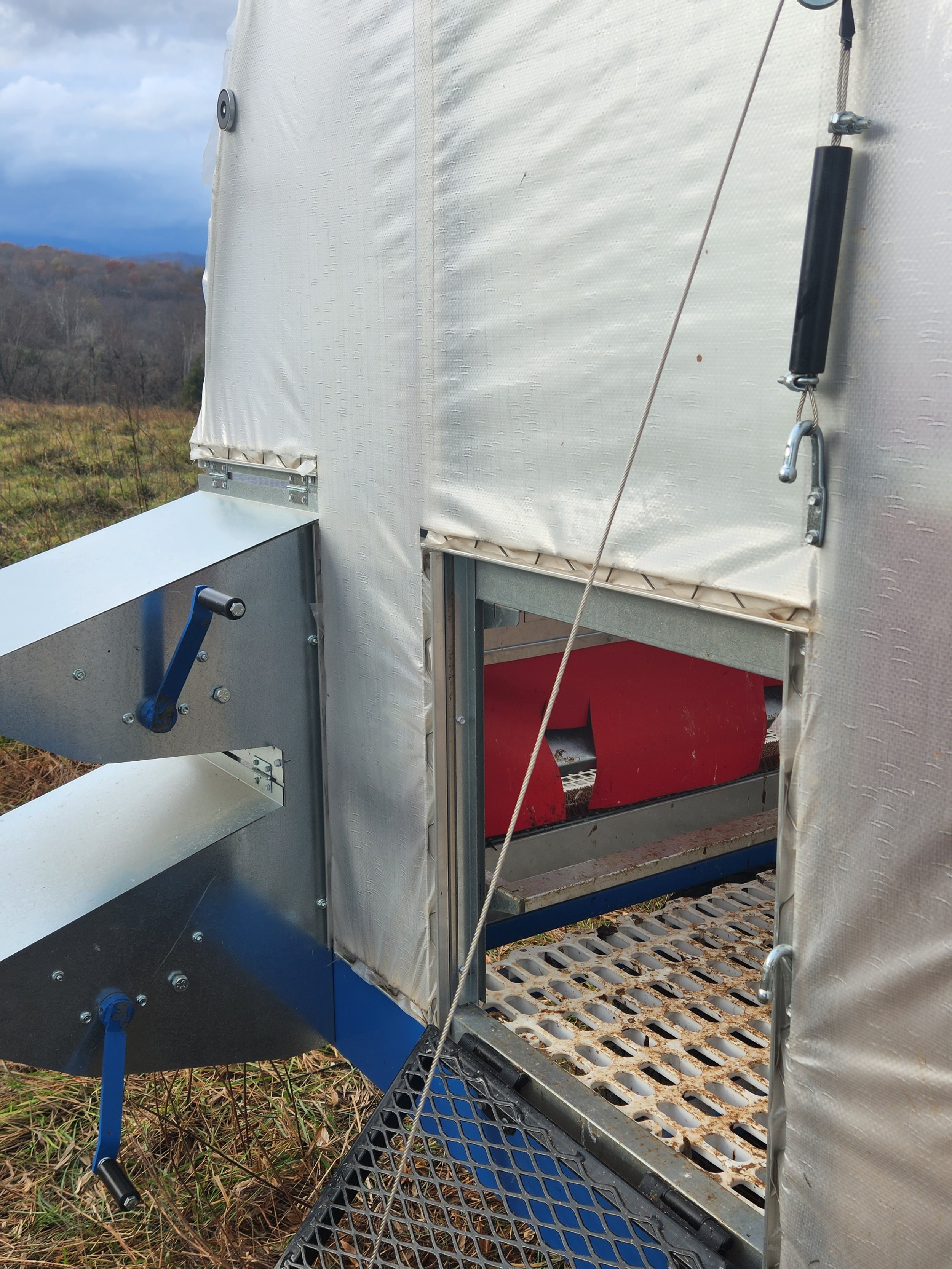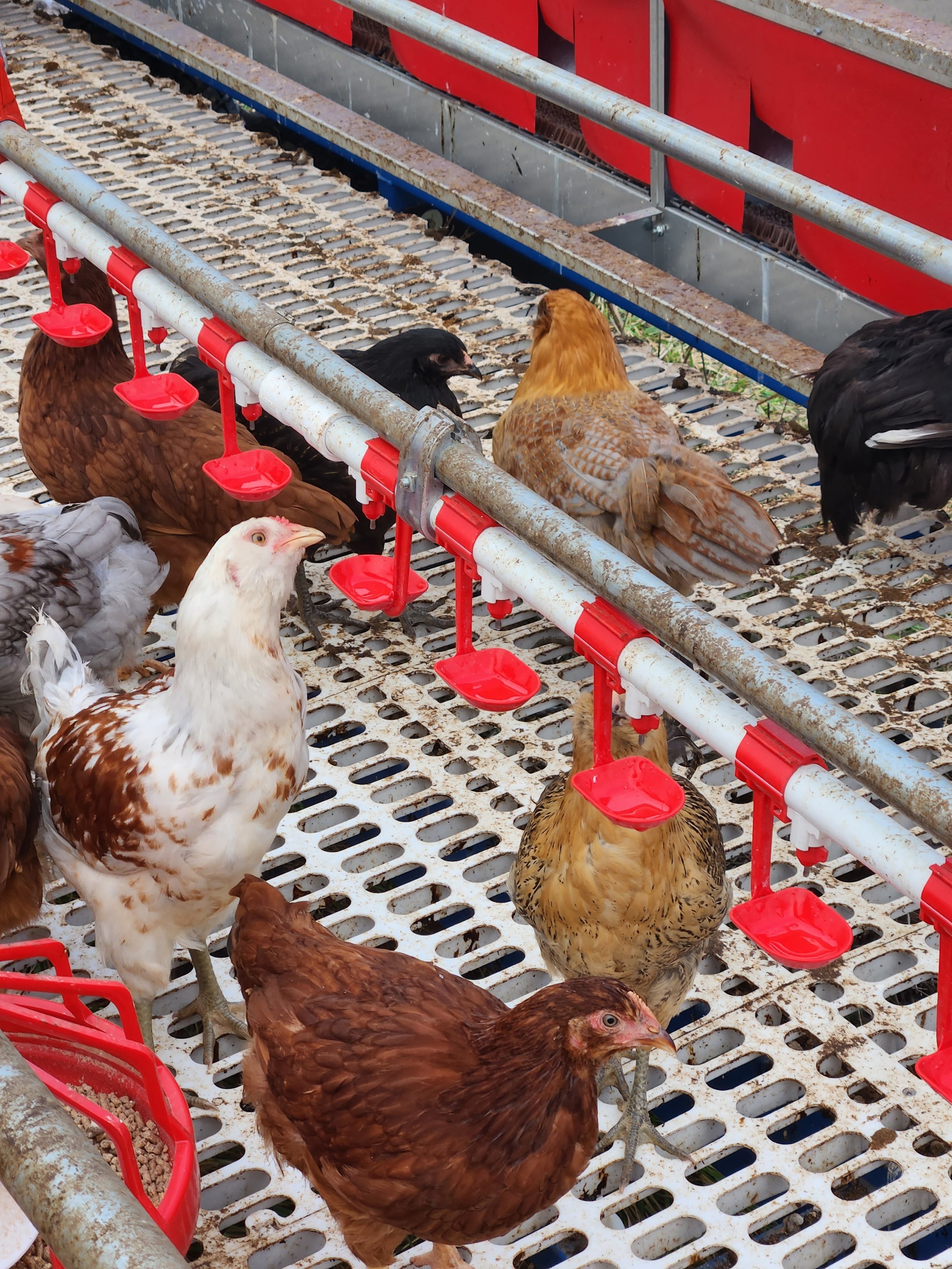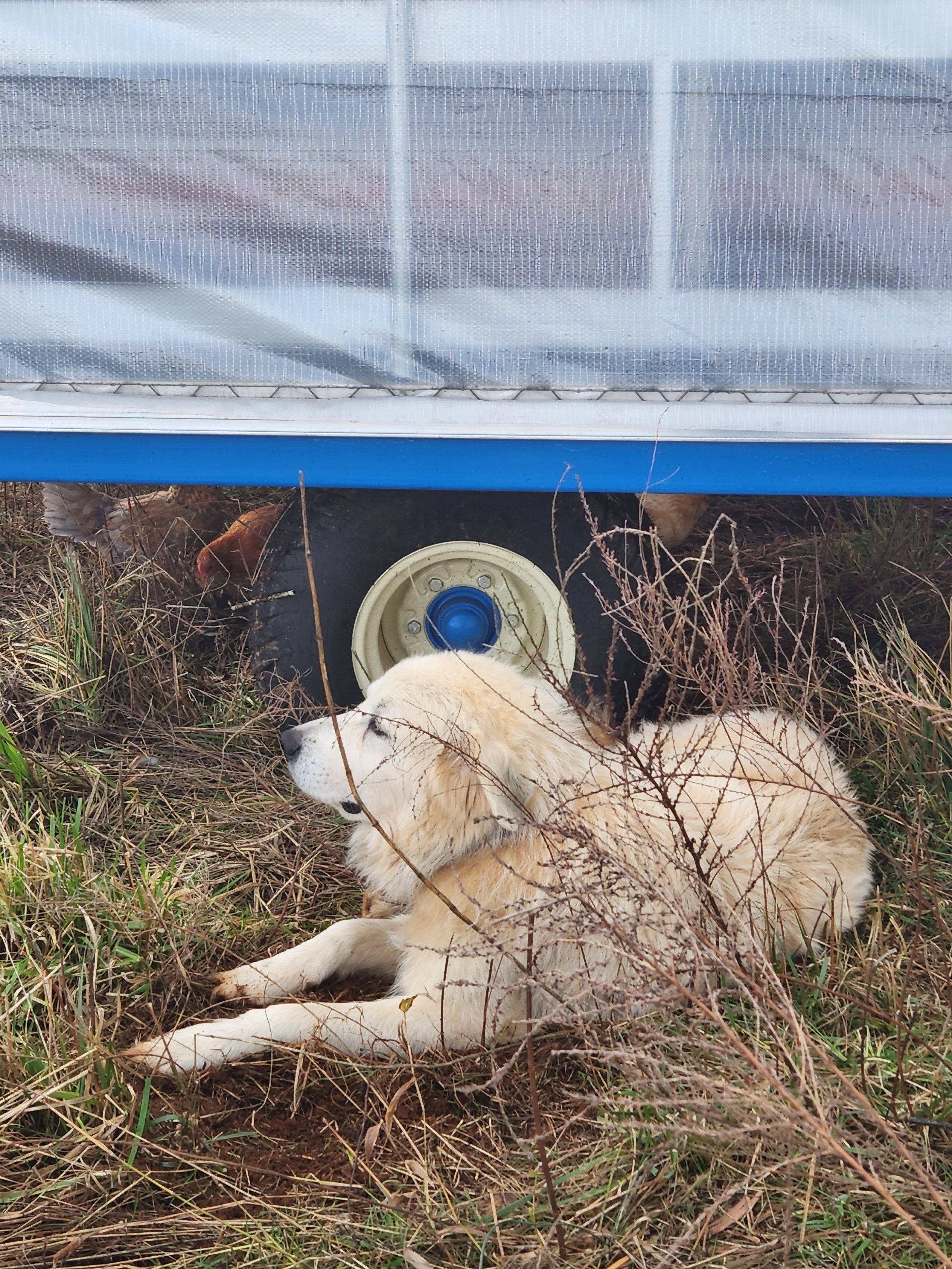Mobile Chicken Coops
Chickens on the Farm.
Our team has recently started to expand our chicken production. Our goal is to have 20,000 broilers each year and more than 2000 layers. Layers are chickens that produce eggs, typically they are not used as meat birds since the older the chicken becomes, the less tender the meat is. Layers can take up to 9 months to start to produce eggs and different chickens produce different types of eggs (different colors and sizes). We bought a variety of chickens so our eggs should come in a myriad of colors and sizes - brown, blue, green, and white. We did this to create a beautiful and diverse range for our customers.
Broiler chickens are raised for meat. There are many chickens that have been bred for desirable characteristics, but Cornish Cross is the standard bird in meat production. Many people do not know this, but the use of hormones and steroids in chicken production is banned in the United States. The larger, hearty meat that you are seeing in the grocery store is from a specialized, high protein diet and natural selection. Our farm is using a mix of birds for meat production, some Cornish Cross, some Freedom Rangers, and we are attempting to add Bresse Chickens as well one day. The different varieties of chickens have different grow out times, and Bresse Chickens, a French bird known for its delicate meat, has a special diet that makes it so delicious. A lot of farmers use Cornish Cross because the bird is ready to be processed at 8 weeks - this can cut back on feed pricing and help the farmer make ends meet. We are interested in finding the intersection between efficient and delicious - we also want to choose birds that work well with our land. Virginia can have cold winters and hot summers, so having birds that can withstand our environment makes our energy consumption bills cheaper.
In addition to having a variety of chickens, we also have our chickens out on the pasture for the majority of their lives. When chicks arrive to the farm, they are kept in a Brooder Barn - a space that has plenty of heat lamps and ample amounts of food for the young chicks to survive. After about 3 weeks they are moved to the pasture, when their feathers have grown out and they need more space. They enjoy a protein rich diet and have the ability to forage for bugs and seeds in the area. Chickens are a great addition to a pasture. They spread manure from other animals and can fight insect issues by eating their populations. Our team knew we wanted to optimize our practices, so we ordered Mobile Chicken Coops from The Mobile Chicken Chicken House.
Using the Mobile Chicken Coops
Our team has a lot to take care of so the automated features in the mobile chicken coops makes our lives a lot easier. There are two large tanks attached to the structure, one for water and one for feed. We check on it regularly to make sure it is not empty, but the daily feeding and watering is automated. In addition to the water and food, the doors also open and close automatically based on times that our team has set. All of this is run off of solar power that is attached to the top of the structure, meaning it can sit away from a power source and still run perfectly. Their is also a neat mechanism in egg collection, a little hand cranked conveyor that brings the eggs safely to the end of the coop. The coop has heaters and lights as well to increase the presumed daylight hours for optimal egg production. The mobile coop is easy to clean and by the time we get to the coops in the morning, the birds are out foraging, enjoying the rising sun, and stretching their legs.
To guard our chickens, a Great Pyrenees lays patiently underneath the chicken coop keeping watch. When sitting in the pasture with the chickens, you can see hawks peeking at them from a distance, but we have yet to lose one thanks to Sasha. The chickens have taken to her as well, they lay close by and burrow into the ground around her. Sasha has been trained since she was little to be around chickens so she doesn’t chase, hurt, or bother them. The dog also does not disturb the grass, eating a bowl full of kibble each day and being content. The chickens still run away from us, but the dog has quickly become their friend and guardian.
Our farm team moves the mobile chicken coop every two-three days. We keep an eye on the ground around the coop and when it looks scratched through, we move the coop about 20-40feet forward. Where the chicken coop was sitting, fresh chicken manure litters the ground, fertilizing that space. The move only takes a couple of minutes and the tractor. We try to move the coop either after they go to sleep or before they wake up, making sure not to hurt any chickens in the process. If the water tank starts to get low, we bring the coop to one of the wells and fill it up. If the feed tank gets low, we bring a tractor full and fill it up again. We may need to do this more often as we get the coop close to capacity, but right now we need to do it every 8 days or so.
Our chickens enjoying the pasture beside the mobile chicken coop.
Our mobile chicken coops make our life a lot easier, and though there are many options, we are happy with the ones that we chose. Whether you are someone interested in getting something like ours, or you just have a couple chickens in your backyard, we highly recommend using a mobile coop to keep things organized. The company we worked with has lots of options, so feel free to check them out here.
Our chickens should start laying eggs sometime in early January, and our first processing of broilers will be at the end of the year. We are currently constructing a processing space that we will show once it is completed. We are so excited to be able to share our products with the area soon. If you are interested in learning more about purchasing our products, please reach out to us at info@maranathafarms.com or subscribe to our newsletter below.
